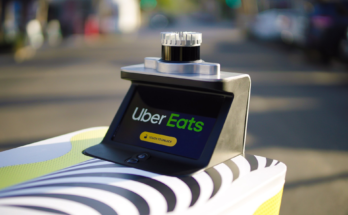
Some recurring expenses in your budget are the same each month, which makes them easy to anticipate. But some budget lines are harder to keep consistent—food, for instance. Food is a necessity, after all, but it’s possible to spend way more than you need to—and especially since the start of the pandemic, that’s exactly what many of us seem to be doing. According to a recent survey by LendingTree, grocery spending in particular has jumped by 17 percent since the start of the pandemic, with 31% of respondents saying they “always overspend” when food shopping, despite making fewer trips to the store overall.
If overspending on groceries is a problem for you, with some research you can figure out a realistic range for your budget and stick to it—even now. Here’s how to do it.
Find the right percent for food in your overall budget
When you first set up your budget, start out by adding your fixed, necessary expenses and your savings goals (pay yourself first!). Then see how much you can allocate to variable and discretionary expenses. Food will fall into that category, and obviously shouldn’t exceed your remaining budget for variable expenses.
Pre-pandemic, Americans spent about 10% of our disposable income on food (a historic low; before 1955, the percentage was around 19%). Five percent of that spending is on food at home, while 4.7% is spent on food away from home. Overall, food spending has decreased over the past several decades.

G/O Media may get a commission
If you just want a quick gut check, take a look at your past food spending. What percent of your take home income goes to groceries, eating out, and take out? If food is around 10% of your income left after taxes and fixed expenses, your food spending is much like the average person’s. If you’re spending more or less than that, it might not mean anything, because everyone’s situation is different, but you might want to look at your other spending categories to see if there’s some imbalance.
If you want to fine-tune your plan or compare your spending to some actual food budget numbers, let’s continue.
Compare your food spending to others
If you want more detailed data, the USDA recommends weekly and monthly spending for food at four different levels. These food plans are the basis of the supplemental nutrition assistance program (SNAP), formerly known as food stamps. These food plans are what the USDA estimates are the cost of “a nutritious diet” for households at thrifty, low-cost, moderate-cost, and liberal cost levels.
The thrifty food plan is healthy but cheap, designed for those with minimal resources (it’s the one SNAP allotments are based on). The low-cost and moderate-cost plans are 30% and 63% higher than the thrifty plan. Liberal is double the cost of thrifty. None of those plans include any food outside the home, like takeout meals.
You might be surprised at the recommendations. The thrifty food budget for a family of two under 50 years old is $402.20 per month; the liberal food plan budget is $798.70 for that same two-person family as of September 2020. (You can find the most recent monthly reports here.)
Track your spending and update your budget
If you’re still having trouble choosing the right number for your budget, consider starting from zero. Instead of shoe-horning your grocery shopping into a number that might feel arbitrary, spend a month tracking what you buy—and how much of it actually gets used. Then use that amount as your basis for next month’s budget, and continue to adjust as seasons or household events demand. It may help you to review your grocery purchases separate from the money you spend on dining out or delivery.
Once you know what the normal range is for your household, you can take action to reduce that amount if necessary. You might find that keeping an eye out for coupons is enough, or you might discover that meal planning is the best way to keep your budget on track. If you’re someone who eats takeout or delivery a lot and find that it doesn’t fit into your budget quite right, you can look at ways to pare that back without cutting it out completely.
This post was originally published in February 2012 and was updated in October 2019 by Lisa Rowan and again on Jan. 5, 2021 by Joel Cunningham to include updated context and more thorough and accurate information.



